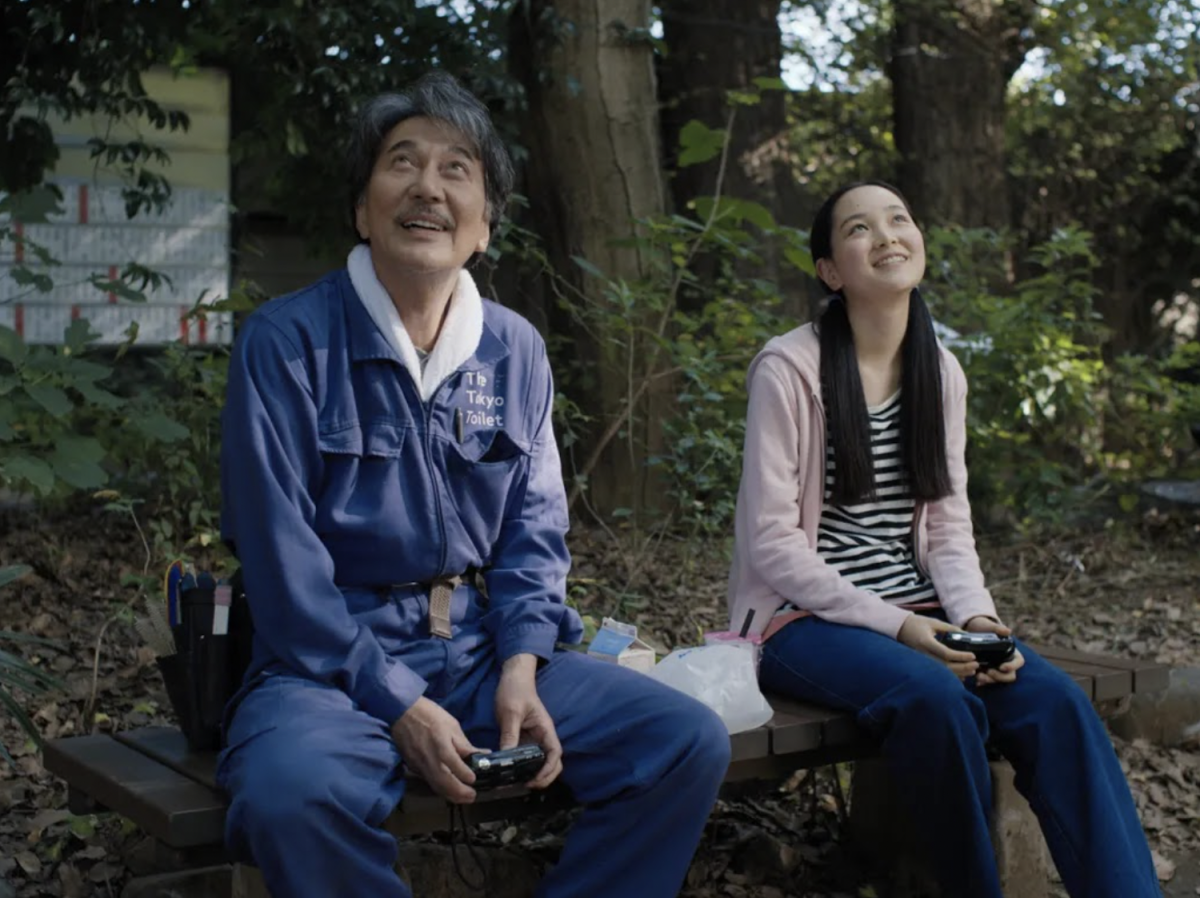What do we do for work? How do we get around? What things do we care about? Listen to? Even eat? As Annie Dillard once wrote, “How we spend our days is, of course, how we spend our lives.” This old saying helps process the answers to these questions. Ultimately, our lives are the embodiment of our interests, habits and tastes — a theme that esteemed German director Wim Wenders made the focus of his latest Japanese language feature “Perfect Days.”
Showing during the 61st annual New York Film Festival at the Lincoln Center for the Performing Arts, the film depicts how rewarding it can be to appreciate the rhythm of other people’s lives.
From the very beginning, performing manual labor and keeping the city clean are woven into Hirayama (Koji Yakusho)’s sense of being. He follows a set routine. Every morning, he wakes to the sound of street cleaners sweeping away in the dark blue dawn. He gets out of his futon, rolls it up, trims his mustache with tiny scissors, brushes his teeth and waters his tree saplings.
This is only part of a regimen Hirayama repeats each and every day — one the audience is taken through with him. Viewers linger by his side as he diligently scrubs toilets and deals with an incompetent coworker, Takashi (Tokio Emoto), who spends more time on his phone than cleaning. Wenders creates a protagonist in Hirayama that tackles his day to day in relative silence.
He is a deeply introspective and stoic individual — one who quietly copes with the world through music and literature. Wenders provides an intimate insight into this muted lifestyle — one that is mellow, habitual, and teeming with an undercurrent of passion and care. This is exemplified in a moment where he places the camera next to Hirayama as he prepares to sleep, such that the audience can read William Faulkner over Hirayama’s shoulder.
Wenders also puts great emphasis on natural environments scattered throughout the Tokyo metropolitan area in “Perfect Days.” In the morning before work, Hirayama stops and smiles at the sky even when it’s cloudy, conveying a sense of overall peace. He takes photos of the sunlight glinting through tree branches on an old Olympus camera, appreciating the subtle detail of his tranquil environment. Wenders focuses his lens on the trees through countless point-of-view shots. Still moments filled with lush green tones and branches flowing in the afternoon breeze completely lull audiences.
The film’s pacing, elongated by long steady shots and infrequent cuts, mimics Hirayama’s introspective gaze, allowing the audience to completely lose themselves in the calming world of the film. Most protagonists of modern day cinema don’t spend their days cleaning, reading and photographing light. While most filmmakers capitalize on dynamic shots and big melodramatic moments, Wenders exercises restraint. His goal is to make modern audiences take a pause and appreciate all the small moments and details in life.
Satisfying Wenders’ eternal fascination with an quiet protagonist, Yakusho — whose performance in this film won him best actor at Cannes Film Festival — uses his gleaming eyes and facial expressions to convey Hirayama’s satisfaction from seeing nature in his urban metropolis. An icon of modern Japanese cinema thanks to his work in psychological thrillers like “Cure” or violent Samurai films like “13 Assassins,” Yakusho displays his ability to perform on the opposite side of the emotional spectrum. He can channel serenity and calmness, as well as tormented rage.
Hirayama’s love for the music of the ’60s and ’70s bleeds into the film’s sonic design, including timeless classics from the likes of Otis Redding, The Velvet Underground and Patti Smith, who are all included in the film’s soundtrack. We don’t know if Hirayama understands English, but he certainly understands the power of these tracks, soaking them up every time he’s behind the wheel. Music is a universal part of our routines, and, like a film’s soundtrack, certain songs reflect our current stage of life. For Hirayama, these songs are a nostalgic call back to the past, perhaps recalling scenes of his youth or a different life he envisioned for himself. These tracks project visceral emotions and potent memories, enhancing the overall cinematic experience.
Hirayama never resorts to explicit catharsis or spontaneity, almost always silently processing and never lashing out at the world. At one point, he cryptically responds to his niece’s question of when they can visit the sea with, “Next time. Next time is next time. Now is now.” The two ride their bicycles off into the sunset, repeating this mantra and feeling, somehow, completely reassured by it.
Receiving critical acclaim on the international film festival circuit, Japan has also submitted the film as its entry for Best International Feature at the upcoming Academy Awards.
With one more NYFF screening of the film on Oct. 12, New Yorkers are invited to appreciate the quotidian rituals of Hirayama in this week-long, slice-of-life chronicle.
Contact Amalia Rizos at [email protected].























































































































































